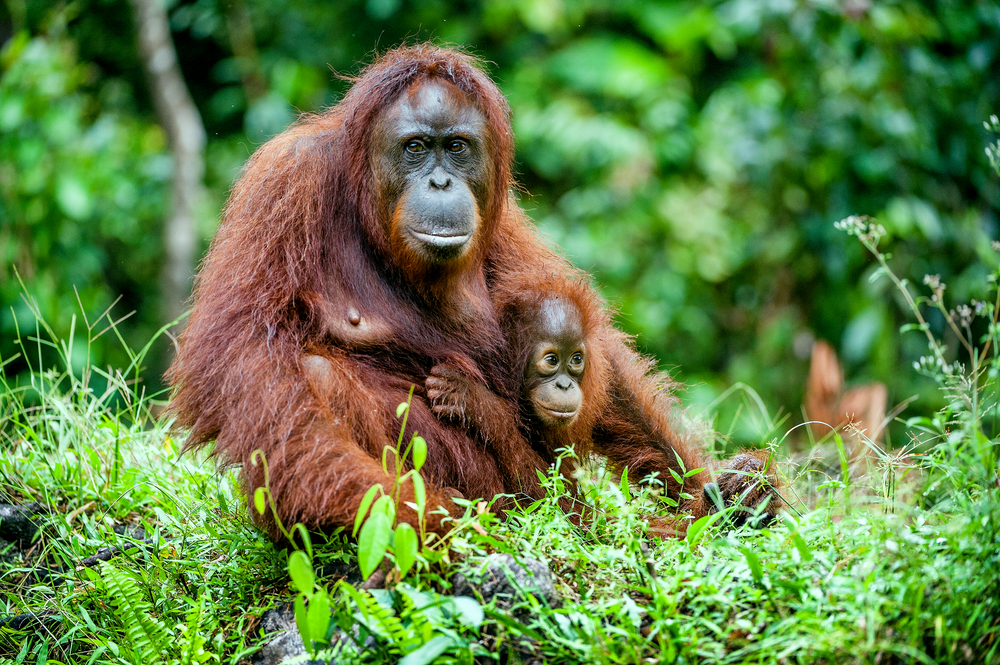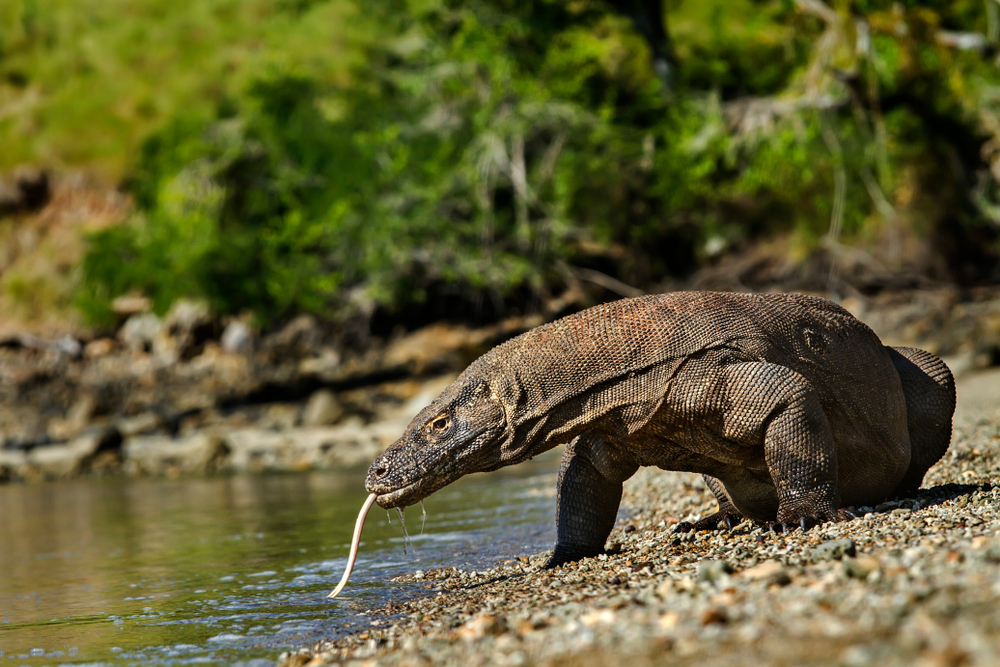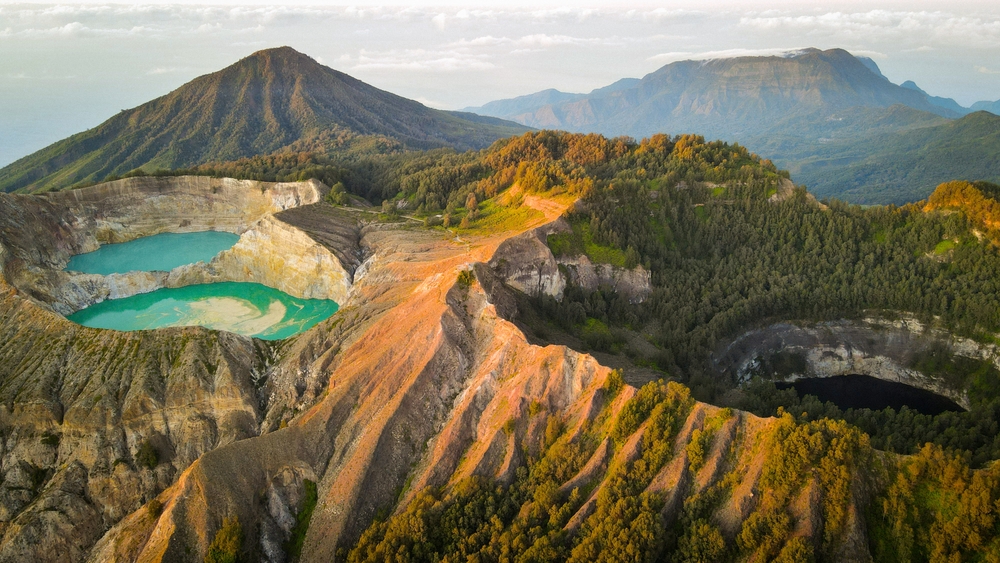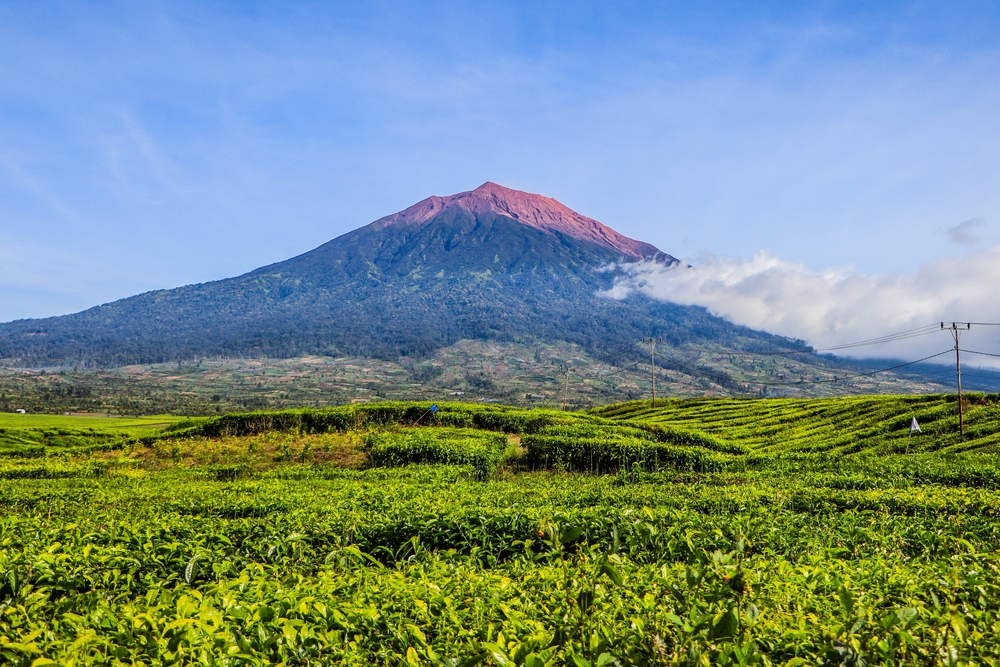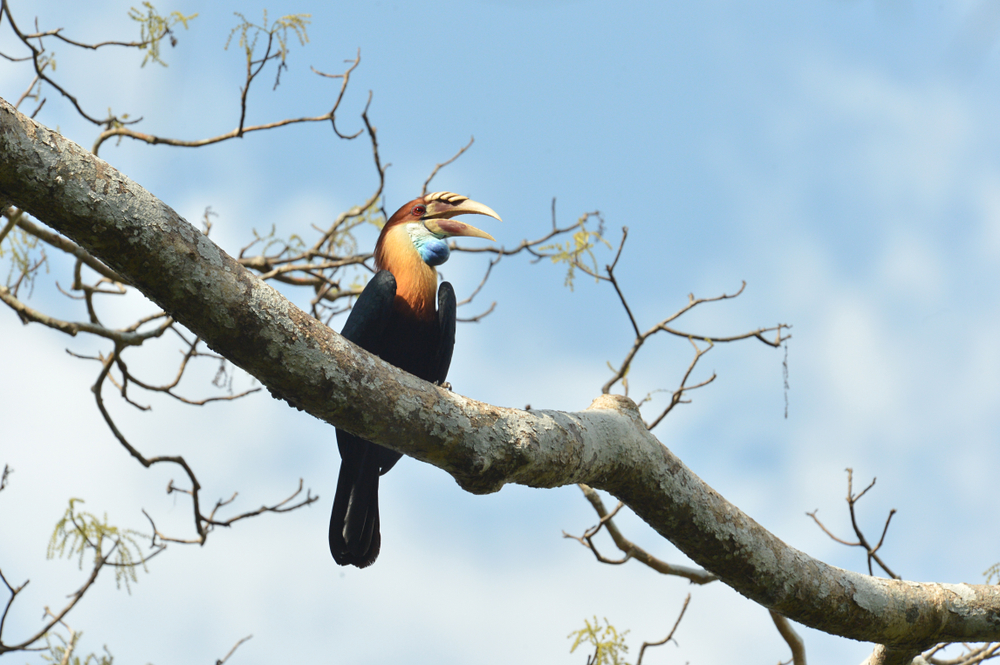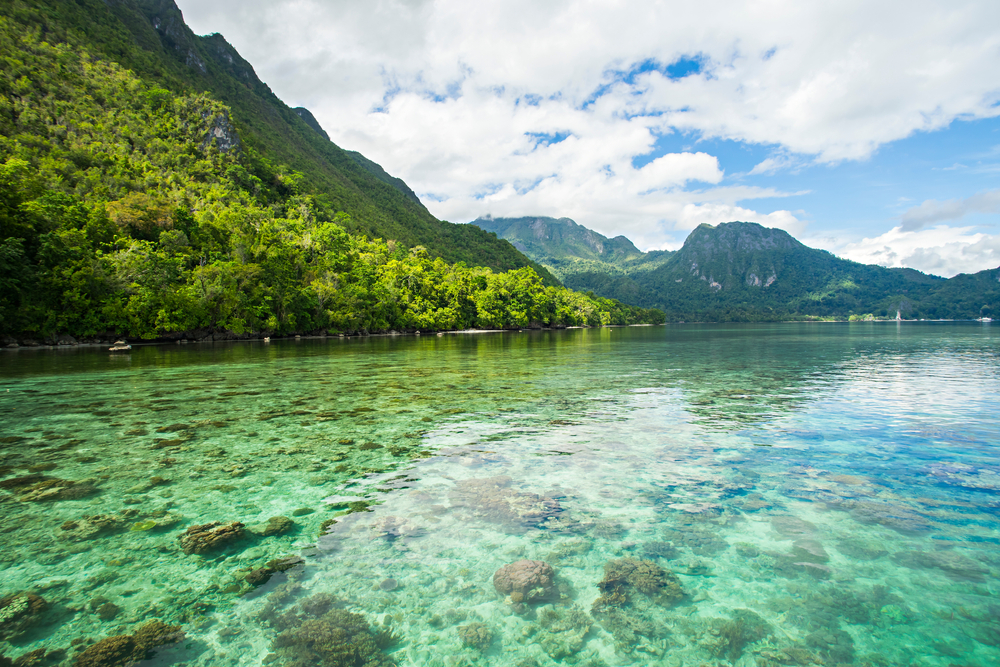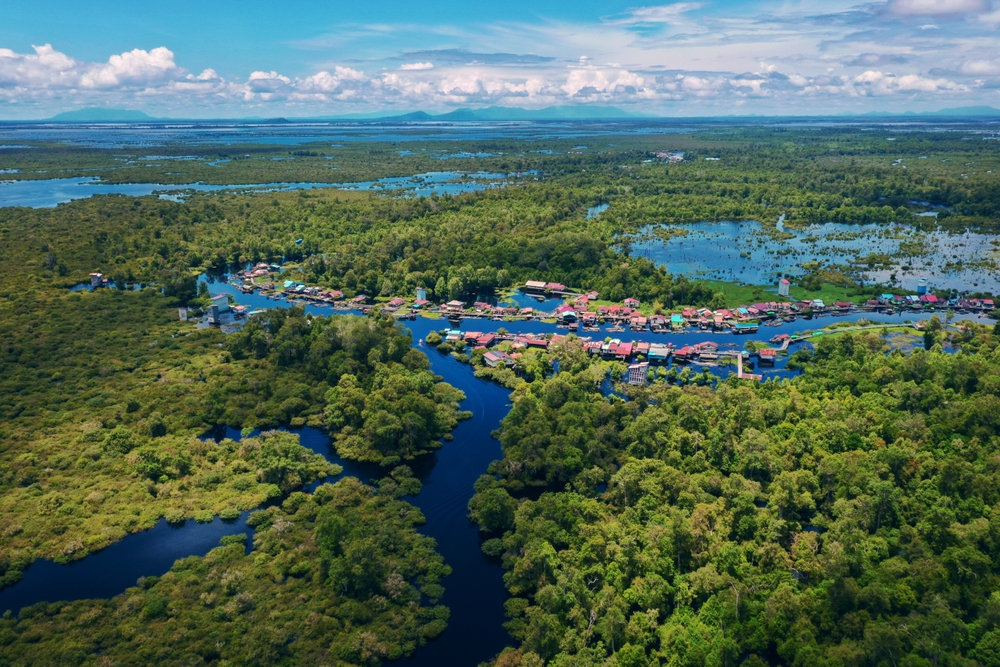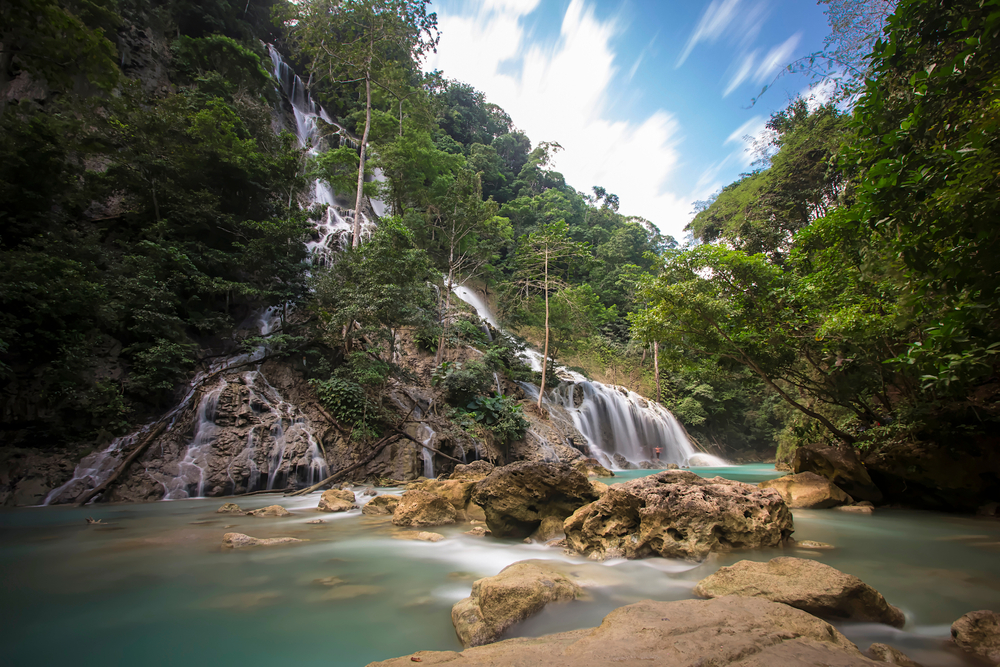Kayan Mentarang Overview
Kayan Mentarang National Park, located in the heart of Borneo, Indonesia, is a sprawling expanse of pristine wilderness that covers approximately 5,500 square miles (14,521 square kilometers). Situated in North Kalimantan, this remarkable park derives its name from two key rivers that flow through the region, the Kayan and the Mentarang, and it is known in the local Dayak language as “Kayan Mentarang.”
The park’s vast and rugged terrain is a showcase of dense tropical rainforests, towering mountains, and tranquil river valleys, making it one of Southeast Asia’s most remote and biologically rich protected areas.
The terrain of Kayan Mentarang is a captivating mix of rugged peaks, including Mount Batu Ayau and Mount Apo, steep ridges, and lush lowlands. This diverse topography is blanketed by an extensive rainforest that features a mix of dipterocarp trees, moss-covered forests, and a variety of flowering plants and orchids.
The park is also dotted with cascading waterfalls, such as the breathtaking Long Alango Falls, which enhance its natural beauty and provide vital freshwater habitats. The dense forests and varying altitudes create a mosaic of ecosystems, each teeming with unique life forms.
Kayan Mentarang National Park is a haven for wildlife, boasting extraordinary biodiversity. It is home to a variety of mammals, including the elusive clouded leopard, the endangered Bornean orangutan, sun bears, and the Bornean gibbon. Other notable inhabitants include pygmy elephants and the critically endangered pangolin.
The park is also a birdwatcher’s paradise, with more than 300 recorded bird species, including the rhinoceros hornbill, the great argus pheasant, and the rare Bornean peacock-pheasant. The intricate food webs within the park support an incredible variety of reptiles, amphibians, and insects, ensuring its place as a vital reservoir of Bornean biodiversity.
Among the park’s most popular features is its cultural richness, as it is home to indigenous Dayak communities who have lived in harmony with the forest for centuries. These communities, including the Kenyah, Punan, and Lundayeh, offer visitors a unique opportunity to learn about traditional forest management practices, weaving techniques, and spiritual customs. The traditional longhouses in the region, known as Lamin or Uma, provide insight into their communal way of life.
Visitors to Kayan Mentarang can explore the park through eco-trekking, birdwatching, and river kayaking, all of which offer immersive ways to engage with its landscapes and wildlife. Guided tours led by local Dayak communities add cultural depth to the experience. However, accessing the park can be challenging, often requiring travel by small planes and riverboats, making it ideal for adventurous travelers seeking remote and untouched natural beauty.
The park faces conservation challenges, including illegal logging, habitat fragmentation, and encroachment. However, its management has made significant strides in promoting community-based conservation efforts. Collaborations between local communities and conservation organizations have bolstered sustainable practices and protected critical habitats, serving as a model for preserving biodiversity while respecting indigenous cultures.








































































